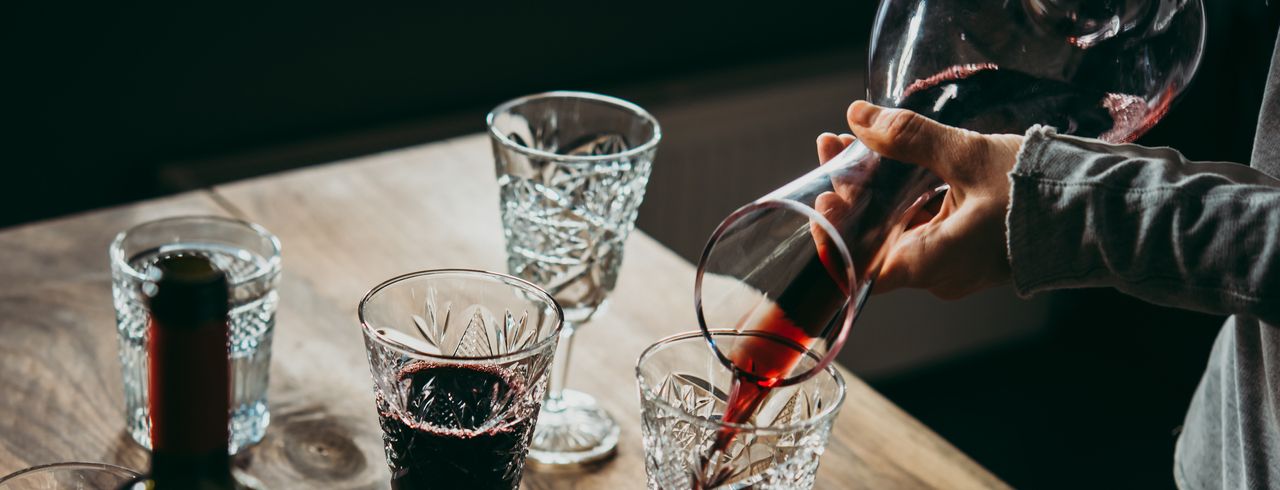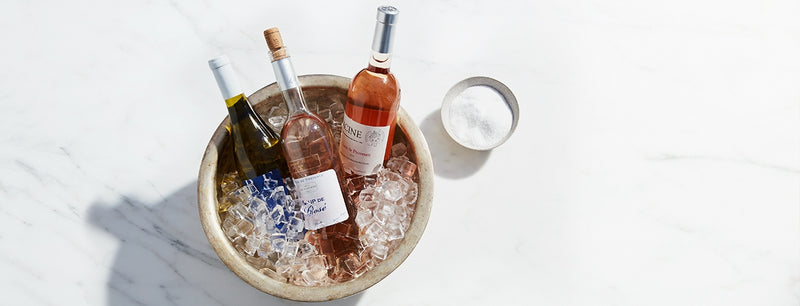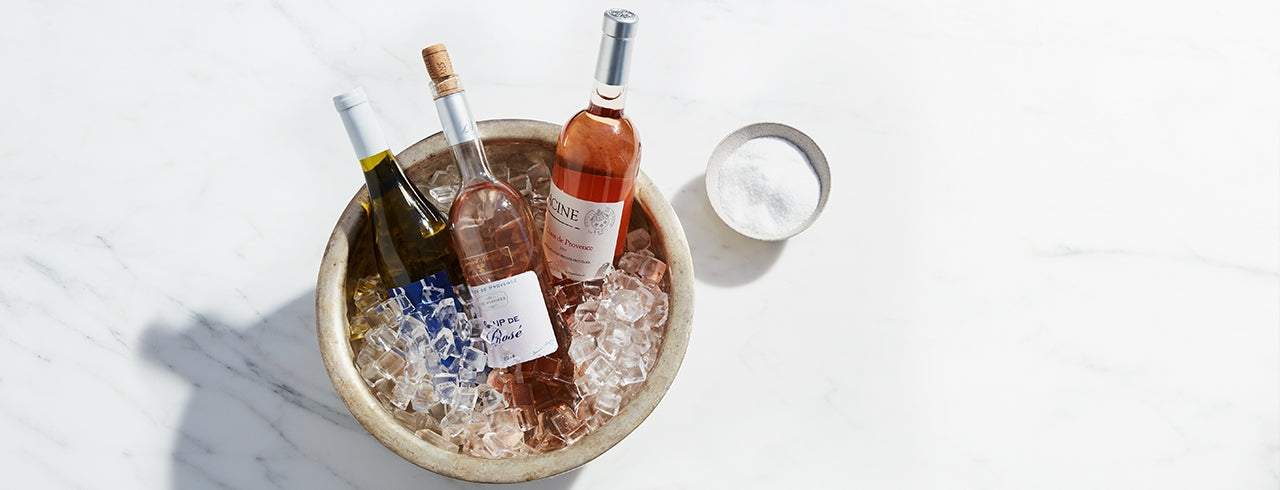
Why and When to Decant Wine?
First, let’s start with the basics of wine decanting. You see a decanter on almost everyone’s wedding registry and an occasional bar cart at a friend’s place, but most of us wonder what exactly a decanter does and exactly how it is useful in a wine tasting experience. It is occasionally seen as a sign of sophistication and “adulting” but it’s also practical. Often seen as more of a piece of art rather than a tool, we’re here to tell you that it often is used as both.
There are two primary functions of a decanter that everyone should know and understand. First, it allows a drinker to ensure the sediment in the bottom becomes separated from the wine itself. Leftover solids in bottles of wine that often make their way into your glass at the end of a bottle are referred to as “dregs”, “wine crystals”, or more commonly and simply “sediment”. These solids are primarily yeast or leftover solids from the wine making process and don’t make for an entirely pleasurable drinking experience. While it's certainly ok to drink them, most opt out of consuming them due to their poor taste and texture.
Why is Sediment in my Wine?
While most whites will not form sediment at the bottom of the bottle, most reds will after a few years. The reason why sediment or wine crystals are more commonly found in reds is due to the production process itself – reds are formed with skins and juice while whites are often made from simply extracting juice from inside the grapes. As a result, they don't see as much contact with the entire grape during the winemaking process.
The act of decanting a wine for purposes of removing the sediment is fairly simple. Due to the complexion of the bottle in most reds, it is fairly difficult to tell if there are some crystals, or how much there is inside. If you have to guess, it is best to assume yes. The first step is temporarily putting the bottle upright in order to allow the sediment to fall lower in the bottle – this could be done for a few minutes or a few hours. Depending on your time, availability, and your memory, it all is variable. For older bottles, 24 hours would be preferable. Obviously, this requires some prior planning, but any time is better than no time. If a bottle was stored horizontally, the sediment would not be collecting together as if it were put in a vertical position. Once ready to pour, slow and steady does the trick, especially for the bottom of the bottle, in order to pour the wine into your decanter and leave the remaining sediment in the bottle.
Why Does Wine Need to Breathe?
On top of being able to separate the crystals and solids in a bottle from the wine, the second primary function of decanting is for aeration purposes. In short, the pouring of a wine into a larger vessel gives it the ability to breathe and be exposed to larger amounts of oxygen. Correctly done, decanting can transform and enhance the wines flavor profile. Scientifically, oxidation is the chemical reaction occurring in wine which converts alcohol to acetaldehyde and starts to change the flavors.
Some argue that decanting a bottle is a useless step that swirling in a glass takes care of, but this is up for debate. Most believe there is a sweet spot for decanting and aerating a wine. Too little and the aromas can’t fully come out, but too much will lead the aromas and rich flavor profiles to disappear. If you’ve ever left a glass out for too long or left an open bottle with the cork in it for more than a couple days, you know the taste.
Red Wines and Decanting
Bold, fuller bodied reds benefit the most from decanting. They soften up and a lot of their underlying flavors become more discoverable. For example, Syrah, Cabernet, and other full-bodied reds should be decanted. Often, the full-bodied wines typically come from a warmer climate. While some older wines need to be decanted for their sediment, young wines benefit more heavily from a quick trip to the decanter to aerate. Even just a few minutes can benefit the flavor profile. Young reds often have tannins or harsh up-front tasting notes that don’t allow for the delicacy and layered profile to be enjoyed as intended. A decanter allows for a lot of those underlying profiles to surface and a lot of the harshness to disappear.
White Wines and Decanting
Traditionally, we only decant red wine due to its existing sediment and more of a need to open up than its white wine counterparts, which are a bit more crisp. However, similar to reds, the heavier bodied whites, such as bottles of Rhone, will benefit. While a bit of oxygen isn’t necessarily a bad thing, decanting a white could allow its temperature to come down a bit if previously stored in the fridge – which should be below most whites optimal serving temperature. Sometimes, too, new aromas will come from decanting a bottle of white, similar to its red counterparts.
Decanter Types
Decanters comes in all shapes and sizes, and some appear to be art pieces, but there are also some interesting shapes that serve functional purposes and achieve certain goals with the wine. Primarily, the decanting process varies according to a few important factors. For one, it changes according to age and body (light bodied to full bodied). The size of your decanter will largely vary according to the amount of oxygen needed. For full bodied reds that require larger amounts of oxygen, opt for a larger and wider decanter. For lighter bodied wines, opt for a thinner decanter in order to not over-expose the wine. Size and width become important because the surface area of the wine that comes into contact with air is determines the level of oxidation. The larger the surface area, the more interaction with air occurs.
An interesting alternative to the decanter is an aerator, which you would attach to the top of a bottle and pour through while delivering wine into a glass. The aerator is less traditional but would allow for significant amounts of oxygen to interact with the wine in a considerably shorter amount of time.
Should I use a decanter?
This brings us to the final question – should you decant your wine? Our definitive answer is maybe! While there’s no end all be all answer, it generally will benefit your bottle and your tasting experience if the wine meets a certain set of criteria but it could also detract from the wine. It varies according to age, body, and ultimately your tasting preferences. With a decanter, and after reading this article, hopefully you've gained a bit of knowledge to share with a friend over a bottle. But, most importantly, you’ll be able to further discover some of your favorite wines and their hidden or layered profiles.





